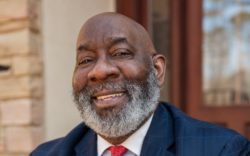Until last week, the state Department of Public Health advised school districts not to reopen if their community had over 100 COVID-19 cases per 100,000 residents. Clarke County, with more than 800 cases per 100,000 people, is firmly within that “red zone.” But DPH recently rescinded that guidance.
“I think the reason they did that is our whole state is in the red zone right now,” Amy Roark, director of nursing for the Clarke County School District, told school board members last week.
With COVID-19 cases spiking in Athens and all over the state, officials face some tough decisions. Is it safe to bring back up to 14,000 students and 2,400 employees for in-person instruction in the middle of a pandemic? Do the benefits outweigh the risks?
The Clarke County Board of Education voted to move the start of the school year back more than a month, to the Tuesday after Labor Day. Delaying the first day of school will give teachers more time to prepare for the possibility of shifting to distance learning in case it’s unsafe for students to return to class in person this fall, Chief Academic Officer Brannon Gaskins said.
Almost 60% of more than 3,600 parents and teachers who responded to a survey said they preferred Sept. 8 over Aug. 3 or Aug. 17. But that survey wasn’t representative of the whole district—some schools had more participation than others, and few people filled out a paper survey, indicating that those without internet access were not fully included. “Although there was an overwhelming choice for Sept. 8, we acknowledge that some communities did not participate in that decision,” Gaskins said.
Currently, CCSD plans to offer parents the option of in-person or distance learning. A later start date gives parents more time to choose an instructional model. “We don’t want them to feel rushed in making that selection,” Gaskins said.
If the pandemic doesn’t improve, high schools and eighth-graders may start the year at home. “We are ready to have that serious conversation with our principals tomorrow,” Gaskins said.
Elementary school students will stay in the same class all day, reducing their exposure to coronavirus, but high school students don’t. And because elementary school classes are more isolated, a COVID case would just require quarantining one class. A COVID case at a middle or high school might mean shutting down the whole school.
“It’s going to be very hard to prevent teenagers from intermingling and switching classes and exposing others in the hallways,” Roark said. “That seems logistically unsafe at this point to me.”
If middle and high school students are learning at home, elementary school students could use those buildings, giving them more room to spread out. Chief of Operations Dexter Fisher said his team measured classrooms, and there is space for 12–15 students to stay eight feet apart. Putting elementary school classes in middle and high school classrooms would further reduce class sizes.
One concern about distance learning, though, is internet access. Gaskins said the district has eight “community hot spots” that can be placed on school buses and parked in neighborhoods to provide wi-fi, and is planning on buying more. The school board also recently approved the purchase of digital devices for all kindergarten, first and second grade students. Students in other grades still have the devices they were issued last year.
As for school buses, Fisher said they will be filled two per seat, or 48 total passengers. All riders will be required to wear masks, and masks will be provided if someone forgets theirs.
Once parents decide on in-person or distance learning and the district knows the numbers, teachers will be assigned to classroom or virtual teaching. “Model teachers” and instructional coaches hand-picked by principals—”the best of our best,” Gaskins said—will create online lessons for each school based on district and state curriculums, and will receive an additional stipend.
Board President LaKeisha Gantt, a psychologist, raised the issue of mental health for distance learners. Problems might be hard to recognize online, she said. Gaskins said that staff should take courses on trauma “so we have an eagle eye on not only some students who are suffering from mental illness or struggles, but that some staff are suffering.”
Despite the later start date, the school year will still end May 20. Some holidays and parent-teacher conference days will be eliminated, but students will still only receive 155 days of instruction, as opposed to 176 if school were to start Aug. 3 as originally planned. However, 15–20 instructional days could be restored if the state receives a waiver on standardized testing.
Under the approved calendar, spring break will be Apr. 2–9. CCSD’s spring break has traditionally coincided with UGA’s in early to mid-March so that parents who work at the city’s largest employer can stay home with their children or schedule vacations. But two-thirds of those surveyed wanted a later spring break this year.
Board member Patricia Yager pushed to eliminate more vacation days to provide more instruction, especially for high-school students whose first semester will be broken up by winter break thanks to the new block schedule, and some of whom will be taking AP classes in an abbreviated time period. “Nobody is visiting Grandma on Thanksgiving when we’re in the middle of a pandemic,” Yaeger said.
The board decided to give administrators the authority to adjust the calendar as needed. The vote was 8–1, with Antwon Stephens voting no.
For the second meeting in a row, Gaskins was filling in for interim Superintendent Xernona Thomas. Last week, Thomas revealed that she had been hospitalized with COVID-19 and was resting at home.
“As I can attest, the health and safety of our staff and students is paramount,” Thomas said in a written statement. “My own experience has helped the team recognize the challenges that accompany the pandemic. We will continue to work together to provide the best instruction and support to our students, faculty and staff.”
Like what you just read? Support Flagpole by making a donation today. Every dollar you give helps fund our ongoing mission to provide Athens with quality, independent journalism.










